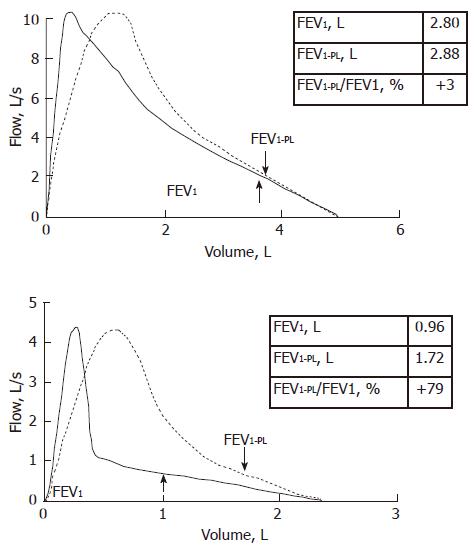Copyright
©2014 Baishideng Publishing Group Inc.
World J Respirol. Nov 28, 2014; 4(3): 19-25
Published online Nov 28, 2014. doi: 10.5320/wjr.v4.i3.19
Published online Nov 28, 2014. doi: 10.5320/wjr.v4.i3.19
Figure 2 Effects of thoracic gas compression volume on spirometry.
Flow at the mouth is plotted against volume integrated from the flow signal (continuous line) or measured in a volume-compensated body plethysmograph (dashed line). The FEV1 at the mouth (FEV1) and in the plethysmograph (FEV1-PL) are indicated. The volume difference between the loops is the volume compressed within the chest wall during the forced expiratory manoeuvre (TGCV) and that does not contribute to the exhaled gas. Upper panel refers to a normal subject. The difference between FEV1-PL and FEV1 is 3%. Lower panel refers to a patient affected by chronic obstructive pulmonary disease with prevalent emphysema. TGCV is very large because of lung hyperinflation in addition to airflow obstruction. FEV1-PL is 79% greater than FEV1.
- Citation: Antonelli A, Pellegrino GM, Sferrazza Papa GF, Pellegrino R. Pitfalls in spirometry: Clinical relevance. World J Respirol 2014; 4(3): 19-25
- URL: https://www.wjgnet.com/2218-6255/full/v4/i3/19.htm
- DOI: https://dx.doi.org/10.5320/wjr.v4.i3.19









